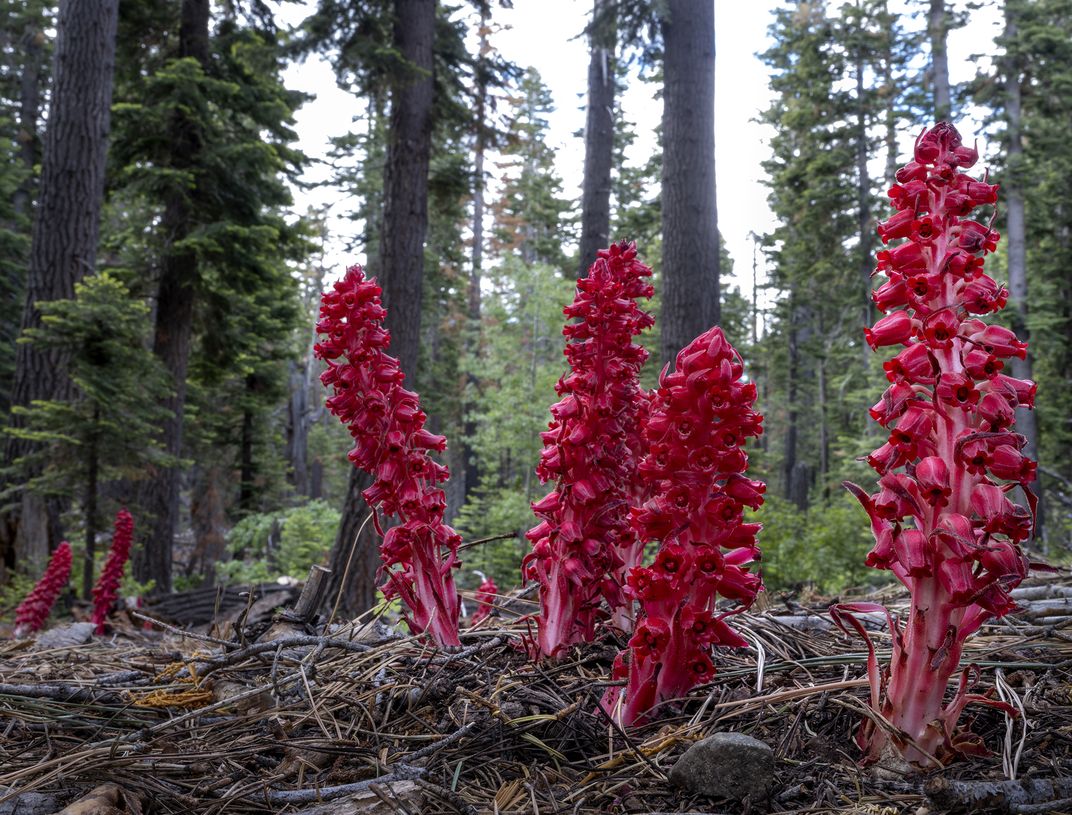A colony of Sarcodes sanguinea beneath Jeffrey Pines (Pinus jeffreyi) forest. The sarcodes plants are no more than 12 inches (30 cm.) tall. Sarcodes is the monotypic genus of a north-west American flowering springtime, commonly called the snow plant or snow flower. It is a parasitic plant that derives sustenance and nutrients from mycorrhizal fungi that attach to tree roots. Lacking chlorophyll, it is unable to photosynthesize. Ectomycorrhizal (EM) symbioses involve a mutualism between a plant root and a fungus; the plant provides fixed carbon to the fungus and in return, the fungus provides mineral nutrients, water, and protection from pathogens to the plant. The snow plant takes advantage of this mutualism by tapping into the network and stealing sugars from the photosynthetic partner by way of the fungus. This is known as mycoheterotrophy. The snow plant is host-specific and can only form relationships with the ectomycorrhizal Basidiomycete Rhizopogon ellenae.
| Date Taken: | 06.2022 |
| Date Uploaded: | 11.2022 |
| Photo Location: | ca, United States of America |
| Camera: | GFX 100 |
| Copyright: | © joSon Studio |


